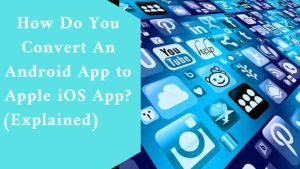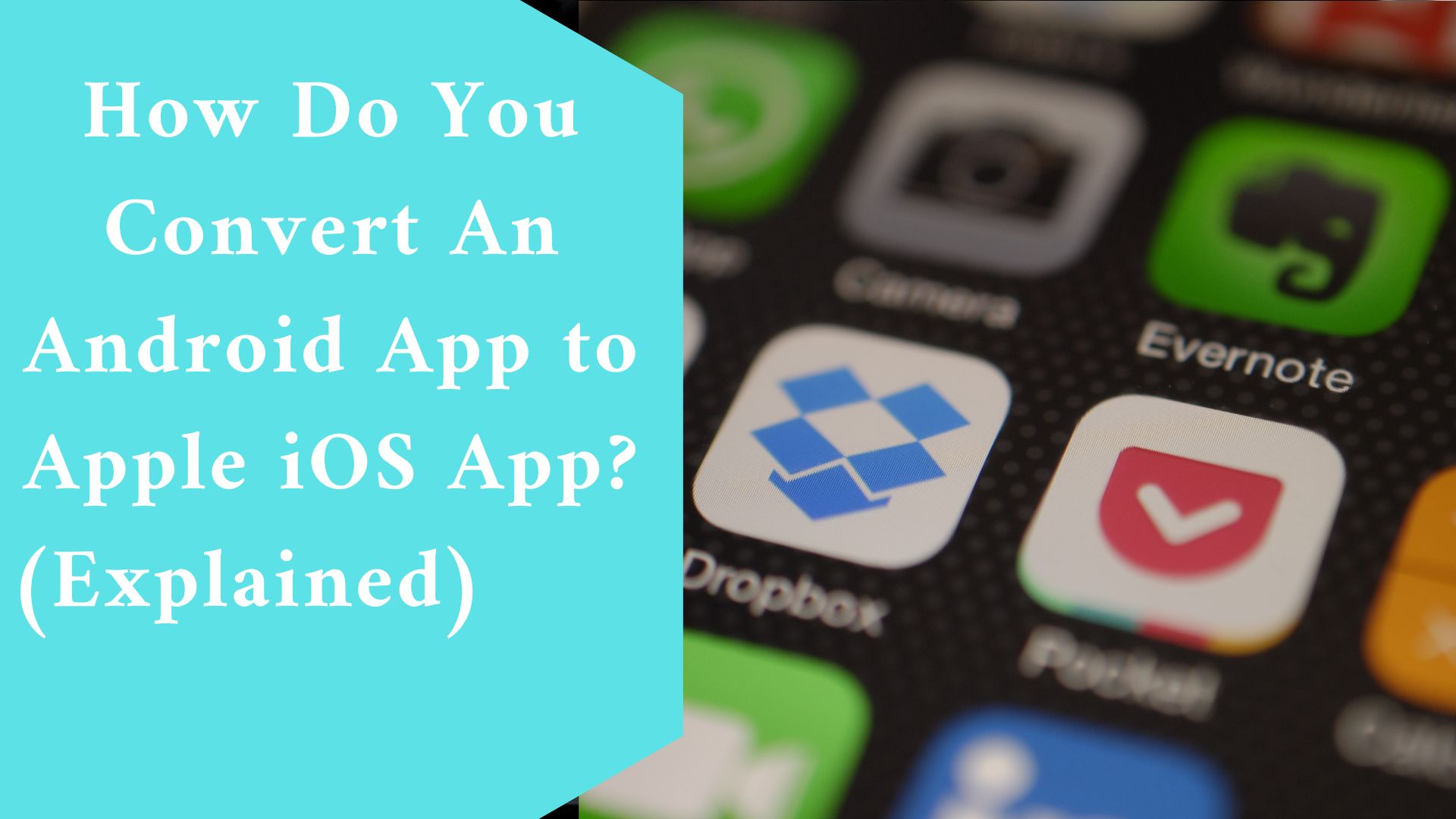Convert an android app to an apple iOS app in an easy steps. While Android is performing well in the current mobile market, with the vast majority of smartphone users globally preferring it, the iOS side of the bargain can still be too enticing, with its committed community.
For a variety of reasons, this is what finally leads many Android-based software companies to explore a timely shift to the iOS platform.
Are you curious about the most essential reasons for converting an Android app to iOS? Let us investigate.
How To Convert an Android App to an iOS App
- Examine Technical and Business Needs.
- Carry out a Design Refresh.
- Rewrite the Underlying Code and Improve the Software Architecture Throughout.
- Testing and Quality Assurance.
- Upkeep and Updates.
1: Examine Technical and Business Needs
This necessitates a thorough examination of the app’s business logic, compatibility issues with the iOS platform and third-party modules and libraries used by the Android app, and room for expansion and optimization.
It should be mentioned that Android and iOS applications share the same backend, which means that the code that performs the business logic layer remains unchanged.
2: Carry out a Design Refresh
Numerous critical design features of the existing Android app will need to be altered and changed per the Flat Design principles.
The Android-native UI mirroring functionality and prior design separation into assets are essential features.
The app porting design should be concerned with a separate patch of project workflow.
3: Rewrite the Underlying Code and Improve the Software Architecture Throughout
Because the Android app code cannot be simply recompiled to suit the iOS architecture specifications, you will need to recode the majority of the product.
The most essential thing here is to keep all of the compatibilities in sync and to keep every phase of the process in sync with new platform needs.
The majority of the work here is done by technical specialists (software engineers and designers).
There is software available that transforms Android code (Java, Kotlin) into iOS code (Swift).
However, many automation solutions generate code that is far from perfect and necessitates extensive modification and optimization by iOS engineers.

4: Testing and Quality Assurance
Following the conversion of an app from Android to iOS, you must thoroughly verify all of the functional UI/UX elements and other operational capabilities of the converted program.
Furthermore, some extra Quality assurance effort that will guarantee the quality of the app’s field use is required.
5: Upkeep and Updates
Of course, the end product of the Android to iOS app conversion procedure must be appropriately maintained in its specialized area of operation.
This includes fixing defects and weaknesses that can only be identified during an active program operation, as well as maintaining any convenient product updates current and subsequent.
The Benefits of Converting an Android App to iOS
Essentially, all arguments for porting an Android app to iOS boil down to taking an opportunity to expand into previously undiscovered, profitable vistas for future growth in the global mobile software industry.
-
Increasing Your Customer Base and Entering New Markets
You could be passing up Apple’s “reverse side” of the market for no apparent reason.
Even if you are solely focused on Android, why not cover both critical market segments? Uncharted market horizons imply new market shares and more users.
Even though Android is a tremendously popular buyer’s option around the world, Apple’s devices still account for 54% of the market in the United States, 53% in Canada, and 53% in Oceania. In most other countries of the world, the total iOS market share varies between 20 and 40%.
If you are targeting such geographies or want to effectively expand across them in the best-case scenario, you cannot afford to pass up the opportunity to begin operating in them immediately after converting an Android app to iOS.
-
Making Use of New Software Capabilities
Converting an Android app into an iOS piece of software allows you to add new features to your product, increasing it to meet Apple’s capabilities.
Because the entire process of porting Android software to iOS entails redesigning the program from the ground up, you have a great opportunity to add or delete whatever features and capabilities you see fit.
You can even assess the results of a completely redesigned product and apply them to the Android counterpart.
Related video ????????????
-
Increasing Profits in a New Market Environment
Despite accounting for a smaller portion of the global market, iOS software consumers are far more willing to spend than Android users.
Furthermore, covering the global market with two apps for critical mobile platforms rather than one should help you earn more income.
You finally quadruple your marketing opportunities while reaping the benefits of untapped market segments.
-
Participating in an Exclusive Brand Ecosystem
Apple has created a distinct, exclusive market and user ecosystem that Android does not have. Its key advantage is that it applies to a wide range of user categories and demographics.
Common iOS users are a distinct breed that must be treated with respect. In the long run, developing a properly targeted strategy pays off tremendously.
Given that the Macbook and iPad are swiftly transitioning to the Apple M1 chip, Android software transferred to iOS is just the first step in a comprehensive product creation that includes the entire Apple product range.
Considerations Before Porting an Android App to iOS
Various preliminary steps should be taken ahead of time to ensure a seamless and error-free process of converting Android to iOS.
-
Choose a Programming Language
Because of its full backward compatibility with Java, Kotlin is advised by Google as the fundamental Android development language for the smoothest, simplest, and fastest rework of Android elements.
At the same time, you must eventually work with Swift, an Apple-developed programming language, to complete your iOS-converted project.
Objective-C and Objective-C++ can also be utilized as alternatives, but their likelihood of being employed for iOS app development is low.
Another effective approach is to take advantage of Kotlin’s multiplatform development capabilities.
To develop assets for a new app, you will need a Mac with macOS installed. However, in the context of Android to iOS porting, Kotlin’s multiplatform capabilities are highly flexible and can become a viable solution.
However, the final technology choice is heavily influenced by end-product functionality requirements.
-
Prepare for a Project Redesign
While certain parts of the design can be reused and left intact or only slightly reworked, many minor and significant design elements, such as icons, buttons, typefaces, ratios, and so on, must be revised.
We go into more detail later in the article, but for now, you should understand and analyze the differences between Material design and Flat design standards.
-
Line up the OS Versions
Unlike the many Android operating systems, all iPhone devices utilize a single iOS that iteratively updates with each new iPhone.
Furthermore, when a new version is launched, all devices that are compatible with it are updated simultaneously around the world.
As a result, the ideal solution is to employ the most recent stable iOS version to address the needed user population segment.
According to Statista, more than 75% of iPhone owners are already on the most recent versions of iOS 14.
Final thought
To target previously untapped market grounds, Android to iOS app conversion is a responsible effort that necessitates a full-fledged software overhaul, upgrade, and optimization project.
This relatively difficult task, however, pays off in the long run as you get a new paying user audience in today’s most exclusive market niche.

